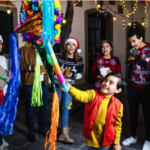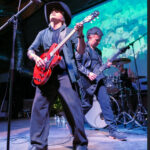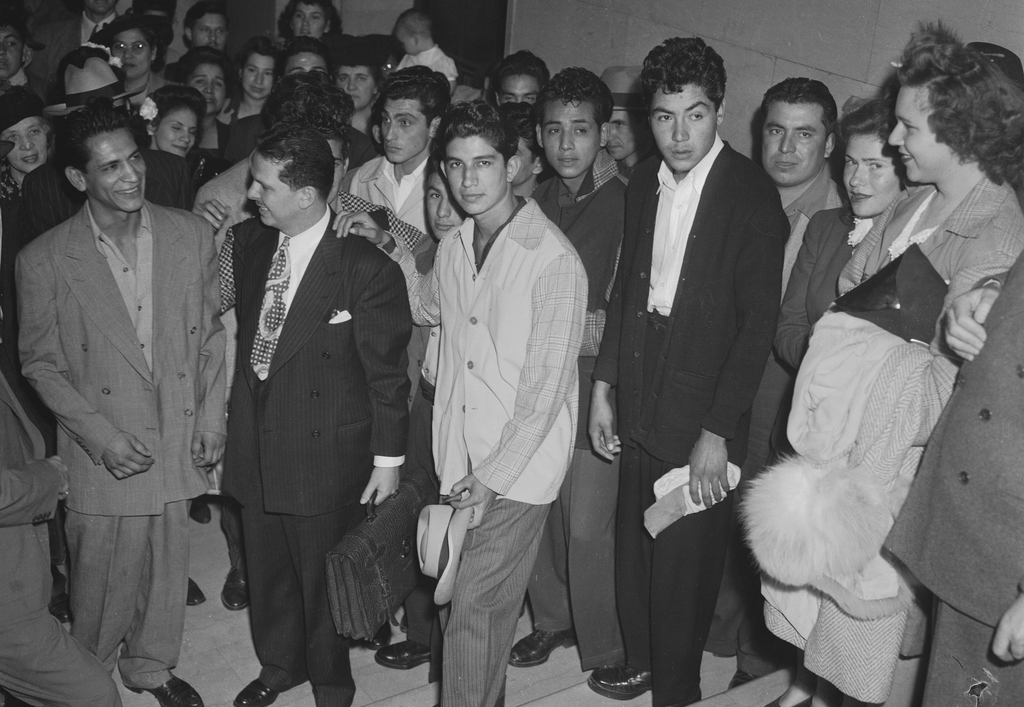It’s been nearly 80 years since The Zoot Suit Riots took place in Los Angeles, California in June of 1943. The riots were initially a clash between Mexican-American youth and servicemen in the Los Angeles area, which became a turning point for the Mexican community while signifying the complex racial and political tensions between minorities and whites during a time when the United States were thrust into war (World War II ). The riots also brought attention to the broken criminal justice system in the country and highlighted disparities the Latino community faced. The events leading up to the 1943 riots can be attributed to a few important factors beginning with World War II. The condition of the world had been monopolized by Nazi Germany’s invasion of Poland in 1939, and the U.S. had officially entered the war in December of 1941 after Japan’s attack on Pearl Harbor (Hawaii) that same month.
During this particular time, the need for goods and textile materials such as silk, wool, and cotton increased. The U.S. had decided to ration some resources and save much-needed items for war and military-related causes. Sustainable outlets for public use were promoted such as the encouragement of sewing and the recycling of wardrobes instead of purchasing new clothing and garments. At the time, zoot suits were extremely popular within the Black and Mexican communities. The fashion had been affiliated with jazz, blues, and swing music and was often worn by African-American jazz musicians (Cab Calloway) stemming from Harlem, New York to Latino barrios in Texas and Southern California. As a newer generation of Mexican youth emerged in the 1930s and 1940s, they started to create an identity of their own in the pachuco style and spoke a Chicano street slang known as Caló. The flamboyant style, attitude, and swagger of pachucos appeared to be defiant and problematic for many Anglo-Americans.

As young Mexicans styled themselves in the zoot suit-oriented fashion in Los Angeles, many Anglo-American servicemen took offense to such clothing and saw it as a rebellion against U.S. patriotism. The local press also added to the negative stereotypes for those dawning such fashion, and dubbed them as troublemakers and hoodlums. The zoot suits themselves had been made out of wool and other various fabrics, which had been a necessity for military uniforms. The suit itself consisted of high-waisted pants with wide-leg balloon trousers, shoulder pads, neckties, and oversized draped coats or blazers sometimes topped off with a hat. Men typically wore high pompadoured hair, and Mexican women who fashioned themselves in the style were known as pachucas. Pachucas often wore bouffant-styled hair, dark-cherry red lipstick, knee-length skirts, cardigan sweaters, or even feminized zoot suits. Pachucas were also known to carry razor blades pinned in their hair for protection against trouble. Makers in the underground or black market also continued to design the suits despite the encouragement of rationing such materials.
The war also saw an influx of Mexicans into California and bordering states due to a demand for labor. Since many men went off to join the military, including Mexican-Americans, there was a need for workers in factories and in agricultural farms. Due to worker shortages, the U.S. entered into an agreement with Mexico known as “The Bracero Program,” in August of 1942. The agreement established temporary contracts for Mexican citizens to take on work and labor jobs in the United States, and as an attempt to heal relations between Mexico and the U.S. after repatriations (deportations of Mexican-Americans) during the Great Depression in the 1930s. The program also guaranteed protection against discrimination and low wages for Mexicans, (although those conditions weren’t always met with certain employers). With a high number of Mexicans entering California, Texas, and bordering states, a high bout of resentment grew amongst those who despised the agreement and migration of more Latinos into the U.S.
With racial tensions and discrimination already brewing due to the zoot suit sub-culture and implementation of The Bracero Program, the murder of a young 22-year-old Mexican man named Jose Diaz only added to the divisiveness between Latinos and Whites, becoming the precedent for the riots. In August of 1942, the same month The Bracero Program was initiated, Diaz was found murdered near The Sleepy Lagoon reservoir, a popular hang-out spot and lovers’ lane for Mexican youth. Diaz had attended a party earlier that evening where a fight had occurred between the attendees believed to be many zoot suiters who had crashed the party. Initially, a well-known young man by the name of Henry Leyva, had been at The Sleepy Lagoon reservoir with his girlfriend when they were attacked by a group of men from the Downey (Southeast LA) area, believed to be mostly Russian immigrant youth whom Leyva was familiar with. After the attack, Leyva rounded up his friends from the 38th Street neighborhood, and they headed back to the reservoir for revenge where they stumbled upon a party. Thinking their attackers were at the party, a fight eventually erupts between all attendees, mostly Mexican youth, and Jose Diaz’s body is eventually found nearby hours later. Diaz was to join the military days before he was found dead, and his family was left devastated by his death. In the aftermath, around two dozen zoot suitors were arrested for the murder of Diaz, although no concrete evidence was ever found. There is speculation that he was mugged prior to the arrival of the 38th street boys and was left for dead, or that he had fallen and hit his head due to being inebriated.
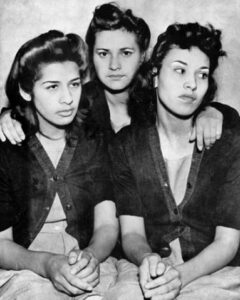
Due to the nature of the case, it became high-profile fairly quickly, locally and nationwide, and pachucos or anyone dawning a zoot suit was deemed criminal and dangerous. Already under public scrutiny, the zoot suiters added to their negative reputation due to the case, and became a target for law enforcement. Eventually, the defendants in The Sleepy Lagoon murder case were acquitted of charges due to lack of evidence, and with help and advocacy from the community and celebrities such as Anthony Quinn, Orson Welles, and Rita Hayworth, who complained of a lack of legal “due process” and rights for the teens. Unfortunately, the Family of Jose Diaz has never gotten full closure as the case remains unsolved to this day.
The fallout from The Sleepy Lagoon trial toppled in with racial tensions in the city eventually came to a head in June of 1943. Apparently, there had been numerous incidents where sailors (stationed in a nearby base) had run-ins with local Mexican youth for months. There were various claims in local media that Mexican youth had provoked and attacked the serviceman and their women while walking past each other on streets, which stirred anger from the community and claims vice versa where U.S. sailors would taunt the pachucos and sexually harass Mexican women. Mexicans claimed they were a target of bad press due to their race affiliation and fashion. Due to mounting tensions, U.S. sailors stationed in Los Angeles decided to venture out into the community and downtown LA on June 3rd, 1943, armed with chains and bats looking for any ‘zoot suiters’ or Mexicans to attack in revenge. Apparently, a fight had broken out between the two parties prior which escalated the riots. Eventually, the riots took place over the course of a week, with many Mexican-American men and youth (as young as 13 years old) beaten, and severely attacked at random including in East Los Angeles. The sailors had beaten and dragged any Mexican-Americans they came into contact with out of bars, theaters, and stores to attack. Some were even stripped of their suits and denigrated. The riots got so severe that other minorities uninvolved such as Blacks and Asians were also attacked.
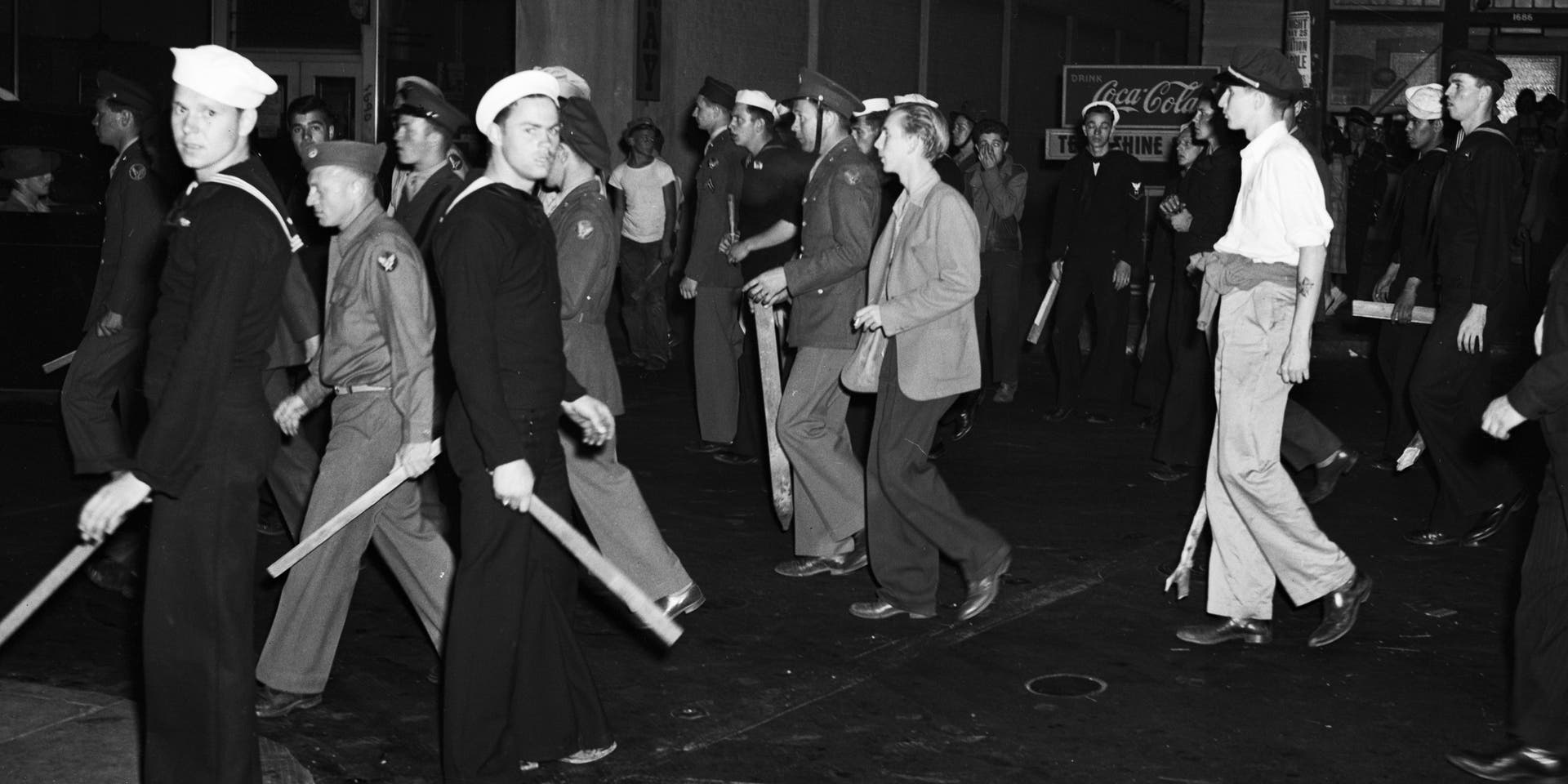
The local LA press had praised and deemed the sailors as heroes while criminalizing all zoot suiters, while few servicemen were arrested. The streets of Los Angeles over the course of that week were filled with brawls and unfortunate unwarranted attacks. The LAPD eventually arrested around 600 Mexican-Americans, and military police were called in to cover areas in the city. Similar fights occurred in other parts of the country, and calls for the banning of zoot suit fashion were heavily advocated for by the LA city council, due to their affiliation with gangs and deviant behavior. With hundreds injured on both sides, sailors were temporarily banned from entering Los Angeles, and the riots eventually died down.
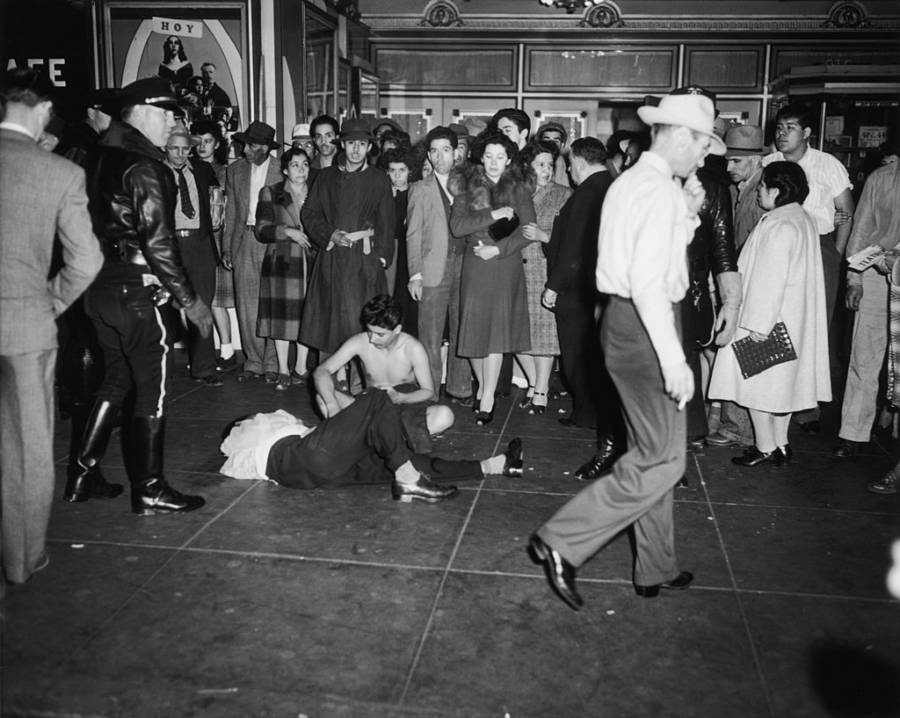
The cause of the riots can be attributed to growing racism perpetuated by negative media coverage of zoot suiters and an overall culture clash between minorities and Anglo-Americans. The riots essentially were ‘race riots’ in retrospect. Looking back now, we see how race relations have maintained their complexity through the decades, and how they’ve been such a core issue for the United States for so many years. Although pachucos and zoot suiters are less common today than in the 1940s, the sub-culture has maintained its relevance in the Mexican-American community, especially in low-rider culture. Many Hispanics still adorn the pachuco attire, especially in East Los Angeles and Mexican barrios. The pachuco and pachuca style has also evolved into other fashion statements in the Mexican community such as the Chicano, Cholo, and Chola attire and makeup.
In examining the overall history of the Zoot Suit Riots, it’s important to note the progress the United States has made since then in race relations, and how our Latino community has evolved. The riots themselves also became a source of inspiration for many Chicano’s afterward, and writer and film director Luis Valdez even used the subject as the central plot for his 1981 controversial musical drama “Zoot Suit”, starring Edward James Olmos, which was nominated for Best Motion Picture at the 1982 Golden Globes. Next month will mark the 80th anniversary of the riots, and its historical implications are as relevant today as they were then. For those interested in viewing an authentic zoot suit, The Los Angeles County Museum of Art is currently the home to a 1940s-era authentic suit, which is now a rare find in the country. The suit is currently on display at the museum and is a part of the permanent men’s collection of 20th-century menswear. The grave of Jose Diaz is also located in East Los Angeles at The Calvary Cemetery for those who want to pay their respects.


